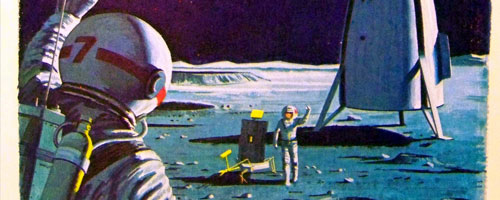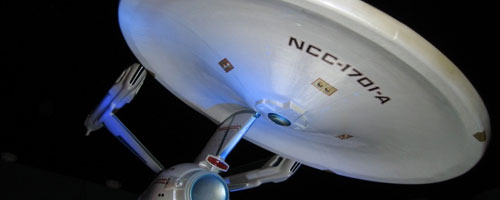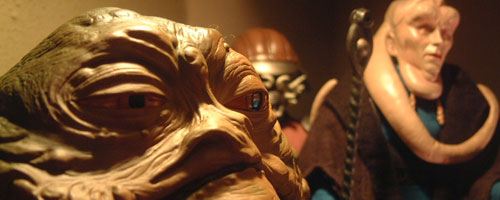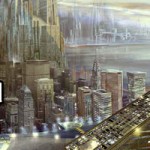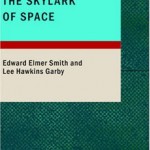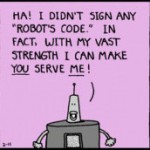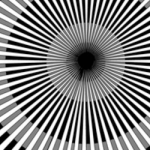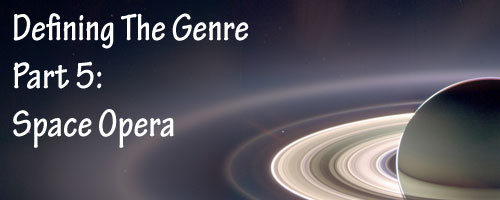
Space opera within science fiction as a genre is really a lot like the red headed step child. It popularized science fiction in the 1920’s and 1930’s, but it is scorned by most die hard science fiction lovers. While the most notable examples of science fiction today are Star Wars and Star Trek, they fall under this category. It’s the subgenre that people love to love and hate at the same time. Even though it is one of the most recognizable and widely accepted forms of science fiction by the general public, it gets very little attention from scholars.
A definition of space opera was first presented by Wilson Tucker in the early 1940’s, and he postulated that space operas contain three principle factors. First, and quite simply, it must have a space ship. A space ship is needed for interplanetary travel and to journey from the known world to the unknown beyond. If the action is taking place on dry (sometimes) land there still needs to be the availability of space ports or ships. Simply appearing on another planet by unknown means is more in line with planetary romances. Second, it has to be a stimulating and exciting adventure, otherwise known as a “yarn”. When traveling through space, one is bound to run into other life forms, and space opera is full of conflict, and often enough conflict is solved by violent means. Third, space operas are more likely than not going to be at least a little formulaic. Many space operas spawn series, and those that don’t can usually be likened to another (Edward and Mendlesohn 197-198).
In the early days of space opera, its infancy if you will, the stories came out in serial format in magazines such as Astounding. This includes such stories and The Skylark of Space by E.E. Smith among others. At the time the title “space opera” (which hadn’t yet been applied to Smith’s work) was synonymous with pulps and hack writing. In this sub genre of science fiction, nothing should be taken seriously, and it was certainly not literary. However, sometime in the 1960’s the definition changed from a space yarn that may well be entertaining but not at all intellectual to a point of nostalgia. Around this time also the work of E.E. Smith, Edgar Rice Burroughs, Edward Hamilton, and their contemporaries started also to be labeled space opera due to their “gee remember that” factor. Even with the nostalgia factored in, though, the subgenre still received little to no respect from the literary world. Space opera was seen as a fast paced, heroic, interplanetary guilty pleasure (Hartwell and Cramer, 2003).
What exactly made up the early space operas? They were grandiose in scale with epic journeys, epic loves, and epic conflict. Humans have spread throughout the Galaxy or else the aliens are humanoid in nature whether physically or psychologically. Our heroes would never have to worry about how long it would take to get from one planet to the next because in a stroke of genius they came up with some faster than light technology that was perfectly safe. While amazing space craft is how they would get around, most action would be on planets which are mostly habitable and not as few and far between as you would imagine. (Or even if they were, we can get there in a week rather than our life time, and out children’s children’s life times). Our heroes are strong, attractive, and smart and can always find a way out of a pinch, not to mention that the guy always ends up with the well endowed girl who probably knows her way around the kitchen. All in all, the early space opera, even up through the 60’s and 70’s was very formulaic (Higgenbottom and Kazlev, 2007).
In the 1970’s space opera got a face lift by way of George Lucas’ Star Wars. Along with the advent of Star Wars we also had Star Trek. The one two punch these two entities brought to science fiction had everyone talking “space opera”. What had been looked down upon as the quaint stories of yesteryear was now the poster child for science fiction. At this time the subgenre started to be taken seriously by publishers and writers alike, having made it through most of its early growing pains. All of these elements came together to open the door for what is termed “modern space opera.”
This newer space opera was a more grown up version of its predecessor. According to Hartwell and Cramer the space opera at this time could be defined as “colorful, dramatic, large scale science fiction adventure, competently and sometimes beautifully written, usually focused on a sympathetic, heroic central character, and plot action [this bit is what separates it from other literary postmodernisms] and usually set in the relatively distant future and in space or on other worlds, characteristically optimistic in tone.” This isn’t much different from the original definition, but now it had more respect and more attention. Like all teenagers, however, space opera wasn’t and likely hasn’t stopped growing and redefining itself (Hartwell and Cramer, 2003).
Over the years space opera is again changing. While using the term “postmodern” might not yet be completely accurate, the subgenre is redefining itself yet again. This new era of space opera has many of the same aspects of its originators, otherwise it might have started a new subgenre rather than a continuation. Those elements include the key elements that make the subgenre, epic scope, escapist adventure, and of course space travel. Where it varies on the theme is the overall tone. New space opera is more pessimistic, darker and more cynical. Humans aren’t necessarily the top of the food chain, and their future is far from secure. Other additions to the subgenre include travel done by other means than spaceships, a concept unheard of before, and a very serious atmosphere. These aren’t the lighthearted jaunts through space that E.E. Smith took us on.
Where before the human had been the dominating force throughout the galaxy, now they are just another player upon the stage. Not only are they not the only intelligent life form out there, but others may be smarter, faster, and more dangerous. Another change has happened to the aliens man will encounter: they don’t necessarily look like us or share our psychology. The Bugs in Heinlein’s Starship Troopers or the Psuedocephalapods (Slugs) in Robert Buettner’s Orphanage series are clear examples of non-humanoid aliens with hive mentalities. How does humankind fight against something that he cannot understand? What if we’re also fighting against ourselves? In many cases the new space opera is exploring artificial intelligence and what happens when we modify ourselves. These are elements that wouldn’t have been included in pulps of the past (Edward and Mendlesohn 206-207).
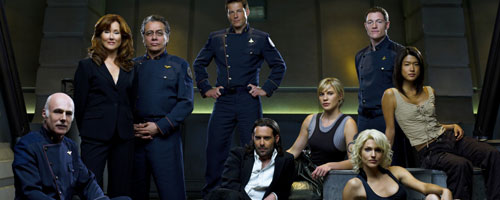
Space opera has been on a long journey from its magazine serial beginning to its darker, more serious version of today. While there have been some changes over the years it still remains an epic story and an epic human battle across space. It has done a lot for the science fiction genre, whether the science fiction genre wants to recognize it as a literary part of itself or not. While it had begun as hackwork and yarns, it gained acceptance through nostalgia and face lifts. Now in its darker days, where is the future of space opera going to take us? In my opinion, it’s going to be an enduring subgenre. It may change a little over the years, but I don’t think there will ever be a time when people don’t look up at the stars and wonder what’s out there, even if we ever do get out there. As long as there’s that wonder, there will be imaginations coming up with the next great adventure.
Recommended Reading:
- E.E. Smith – Chronicles of the Lensmen, Volume 1
- Brian W. Aldiss – Eighty-Minute Hour: A Space Opera
- Jack Vance – Tales of the Dying Earth
- Frank Herbert, Brian Herbert & Kevin Anderson – The Dune Series
- Verner Vinge – A Fire Upon The Deep
- Elizabeth Bear – Hammered
- John Clute – Appleseed
- Scott Westerfeld – The Risen Empire
- Peter F. Hamilton – The Reality Dysfunction Part I: Emergence
- M. John Harrison – Light
Sources:
- Hartwell, David G., and Kathryn Cramer. “How Shit Became Shinola: Definition and Redefinition of Space Opera.” SFRevu. Aug. 2003. 10 Oct. 2008 <http://www.sfrevu.com/issues/2003/0308/space%20opera%20redefined/review.htm>.
- Higginbottom, Ben, and M. A. Kazlev. “A New Breed of Space Opera.” Orion’s Arm. 9 Dec. 2007. 12 Oct. 2008 <http://www.orionsarm.com/intro/space_opera.html>.
- James, Edward, and Farah Mendlesohn, eds. The Cambridge Companion to Science Fiction. New York: Cambridge UP, 2003. 197-99; 206-07.


